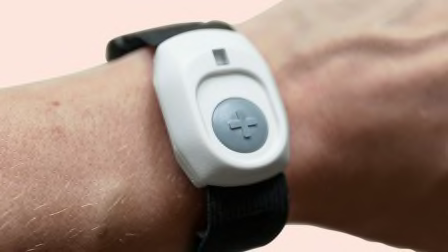How to Fix Your Bladder Problems
Recent research finds that leakage is very common. But effective help is out there.

Always on the lookout for a bathroom? Bladder leakage can interfere with your well-being, and people—especially women—are more likely to experience it with age. Just 3 percent of women younger than 35 experience incontinence, compared with 38 to 70 percent of women older than 60, according to Wolters Kluwer UpToDate, a tool for doctors.
Understand Your Symptoms
Before recommending a treatment, your healthcare provider will determine the type of incontinence you’re experiencing. The most common form is stress urinary incontinence, or leaking when you sneeze, cough, or laugh. “Anything that adds abdominal pressure can force the bladder to lose urine,” says Brian J. Linder, MD, a urogynecologist at the Mayo Clinic in Rochester, Minn.
Overactive bladder, or urgency incontinence, causes people to feel like they have a pressing and frequent need to use the bathroom—and that if they don’t make it in time, they may have an accident. “Some people need to go every 20 minutes, which limits what they can do,” Kim says.
Know Your Options
Evidence-based treatments for urinary incontinence range from lifestyle tweaks to surgery, and your provider should start with the least invasive options. If your regular doctor doesn’t present you with a variety of strategies to try, a specialist such as a urologist or a urogynecologist can help you find what works. “You don’t have to deal with this just because you’ve learned to live with it,” Kim says.
Lifestyle modifications are typically the first line of treatment. If you’re overweight, losing a few pounds can take pressure off your bladder. Easing constipation with dietary changes like increasing your fiber intake, or with medication, if needed, can have the same effect. Alcohol and caffeine can irritate the bladder and promote leakage, so limiting usage of those can also help.
Pelvic floor physical therapy, which helps strengthen the muscles involved in urination, is another noninvasive treatment. Known as Kegels, these exercises can help with both stress incontinence and overactive bladder. They can take several sessions to work, Kim says, and you can practice at home.
Medication may be the next option, Linder says. Anticholinergic drugs such as oxybutynin (Ditropan and Ditropan XL) can help calm an overactive bladder, but research has linked them to dementia symptoms in older adults, especially in higher doses. A beta-3 agonist such as mirabegron (Myrbetriq) could offer some of the same effects without the cognitive risks, according to Kim.
More invasive procedures are often a last resort. Among these, the gold standard for stress incontinence, Kim says, is a sling procedure, which generally uses mesh to help support the urethra and prevent leakage. Most people find that this operation eases their symptoms, but complications can sometimes be serious. Doctors can also inject bulking agents into the bladder. That is less invasive, but there’s little long-term data, according to guidelines from the American Urological Association. For overactive bladder, Botox injections into the bladder muscle may help. “It will last about six months,” Linder says, so repeat treatments are needed—and some side effects can be severe.
Editor’s Note: A version of this article also appeared in the July 2022 issue of Consumer Reports On Health.




















